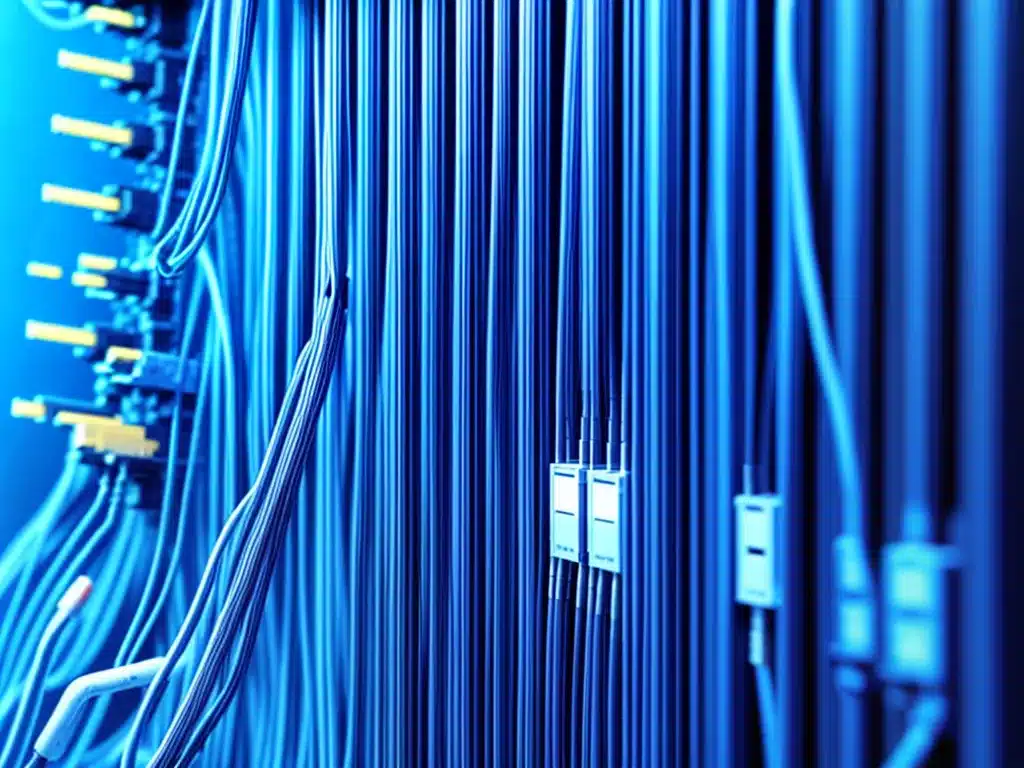
Why Upgrade Your Network?
Upgrading your network infrastructure can provide a number of benefits for your business or organization. Here are some of the key reasons you may want to consider a network upgrade:
-
Improved performance – A network upgrade can provide increased bandwidth, faster file transfer speeds, lower latency, and overall better performance for users. This leads to higher productivity and efficiency.
-
Increased capacity – Upgrading to higher capacity network components allows more users and devices to be supported by the network simultaneously. This prepares you for future growth.
-
Enhanced security – New networking equipment often provides better security features like firewalls, intrusion prevention, and encryption. This protects your sensitive business data.
-
New capabilities – Upgraded networks let you take advantage of new technologies like VoIP phones, virtualization, video conferencing, cloud computing, and more.
-
Obsolescence – Old network equipment eventually reaches end-of-life and needs to be replaced. Vendors stop providing firmware and security updates for obsolete equipment.
Gather Requirements and Goals
Before planning a network upgrade, you need to determine your requirements and goals. This will guide your technology choices. Key things to consider include:
- Number of users and devices on the network
- Bandwidth needs and traffic patterns
- Desired performance metrics like throughput and latency
- Top applications and services to support
- Security and compliance needs
- Scalability requirements for growth
- Reliability and uptime needed
- Budget constraints
- Technical capabilities of IT staff
Document these requirements and get input from business and IT stakeholders. Understanding your goals upfront ensures your new network meets your needs.
Survey Your Current Network
To plan an effective upgrade, you need to fully survey and document your existing network infrastructure.
- Catalog all networking equipment like routers, switches, firewalls, and Wi-Fi access points and their configurations.
- Diagram the logical and physical topology of your network.
- Identify end-of-life equipment that needs replacing.
- Analyze traffic patterns and utilization.
- Look for bottlenecks, congestion, and potential single points of failure.
This assessment shows you what is working and what needs upgrading. It also establishes a baseline for measuring improvements from the upgrade.
Develop a Technology Roadmap
Next, develop a phased roadmap for the network upgrade:
-
Short term – Quick improvements like adding bandwidth, changing device configurations, or replacing obsolete equipment.
-
Medium term – Major upgrades like new core and distribution switches, routers, firewalls, and Wi-Fi.
-
Long term – New cabling, network virtualization, SD-WAN, etc.
Sequence upgrades by priority according to your requirements. A modular approach is less risky and disruptive than doing everything at once.
Select the Right Products and Services
Choosing the right networking products and services is key for a successful upgrade:
- Speak to pre-sales engineers from major vendors like Cisco, Juniper, Aruba, etc.
- Evaluate network operating systems and architectures like Cisco IOS, JUNOS, ArubaOS.
- Validate that new equipment will support your apps and use cases.
- Compare models on price, performance, reliability, and features.
- Consider support services, licensing, and hardware warranty.
- Make sure products fit within your IT team’s skillset.
Doing thorough due diligence reduces compatibility issues and buyer’s remorse. Test equipment with a proof-of-concept if possible.
Plan Your Rollout
Careful planning of the deployment and migration is vital:
- Schedule upgrades during periods of low network usage.
- Upgrade core and distribution first, then access layer.
- Have contingency plans to roll back changes if issues emerge.
- Stage new hardware in a lab for testing and pre-configuration.
- Start with a pilot site then deploy to other locations in phases.
- Budget for professional services to assist if needed.
With good planning, you can upgrade your network without major disruptions to operations. Validate upgraded networks before going into full production.
Training, Testing, and Monitoring
To get the most from your investment:
- Train IT staff on new equipment and management systems.
- Perform testing for performance, failover, and security.
- Update network diagrams, documentation, and procedures.
- Expand monitoring and alerting to take advantage of new capabilities.
- Tune configurations and performance as the upgraded network is exercised.
Ongoing attention ensures your new network upgrade continues meeting business needs.
When to Work With a Partner
For many organizations, enlisting help from a managed service provider or consultant can smooth the process:
-
Planning and design – A partner with experience designing networks for your industry can provide recommendations tailored to your environment and objectives.
-
Deployment – VARs and integrators have resources to help with equipment procurement, configuration, installation, and migration off hours.
-
Optimization – Partners can fine-tune your network and fix underlying issues to get the most out of your investment.
-
Training – Consultants instruct your team how to use and manage the new technologies being implemented.
The right partner provides expertise and extra hands to make a complex network upgrade easier.
Upgrade Your Network the Right Way
Upgrading your network takes careful planning and execution to realize the benefits while minimizing disruption. Follow best practices around assessment, roadmap development, product selection, rollout, and adoption. Take advantage of external resources if required. With the right approach, you can refresh your network to enable the next stage of growth for your business.












